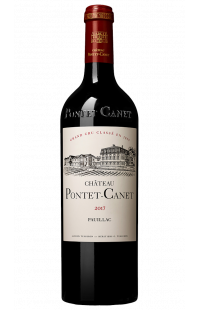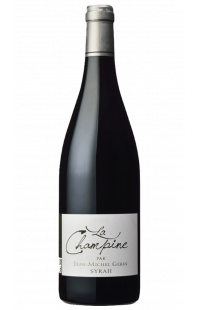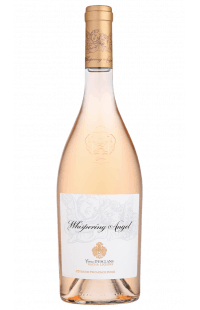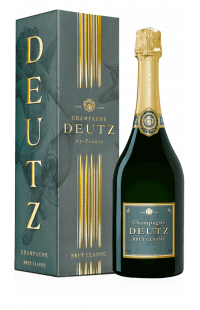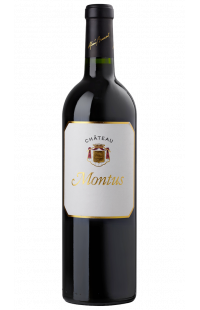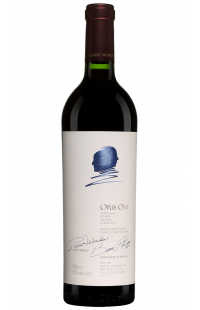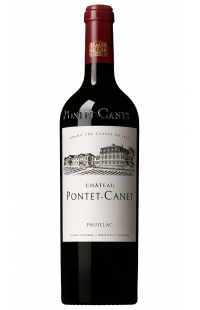- Menu
- All our wines
- Bordeaux
-
Rhône
-
Burgundy
-
Rosés Wines
-
Champagne
- France
-
World
- PRIMEURS
- ORGANIC WINES
Wines of La Clape
There is 1 product.
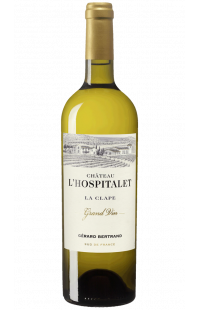
Gérard Bertrand : Château L'Hospitalet Grand Vin Blanc 2022
Languedoc - Vins de La Clape - White Wine -Available in
- Bottle (75cl)
- 39.00€ / bottleTASTING NOTES
Specifications
Discover and Enjoy the Wines of La Clape - A Languedoc Treasure
Learn everything you need to know about the wines of La Clape, an emblematic wine region in Languedoc. Explore its history, grape varieties, top wineries, and much more to fully appreciate these exceptional wines.
The wines of La Clape, from one of the oldest wine regions in Languedoc, are true gems for wine enthusiasts. Nestled between the sea and the mountains, La Clape’s unique terroir and Mediterranean climate produce wines with powerful, complex aromas. In this article, we’ll dive deep into this remarkable wine region, exploring its history, grape varieties, winemaking methods, and the top wineries to visit. Whether you're a wine lover or a seasoned connoisseur, this comprehensive guide will help you understand and enjoy the wines of La Clape to the fullest.
Introduction to the Wines of La Clape
Located in the Aude department, at the heart of the Languedoc-Roussillon region, La Clape is a prized destination for those who appreciate characterful wines. Recognized as an Appellation d'Origine Contrôlée (AOC) in 2015, La Clape’s exceptional terroir combines maritime influences with rich limestone soils. This unique terroir gives the wines a great aromatic richness, structural complexity, and remarkable longevity.
Once an island in the Mediterranean, La Clape has become a peninsula with a Mediterranean climate marked by hot, dry summers and mild winters. These conditions, along with a regular sea breeze, allow the grapes to mature slowly and gradually, resulting in wines of great finesse and intensity.
La Clape wines are primarily red, made from grape varieties such as Syrah, Grenache, and Mourvèdre. However, the region also produces excellent white and rosé wines, known for their freshness and elegance. Whether you prefer powerful reds or refreshing whites, La Clape has something to satisfy every palate.
The History of La Clape Wines
Origins and Evolution Over the Centuries
The winemaking history of La Clape dates back to Roman times when the region served as a naval base for the empire. The Romans planted the first vines here, quickly recognizing the terroir's potential. Over the centuries, viticulture flourished, particularly through the influence of monastic orders in the Middle Ages, who played a vital role in developing viticulture across Europe.
Roman Influence and Development During the Middle Ages
Under the Roman Empire, La Clape wines were already exported throughout the Mediterranean, establishing the region's reputation. In the Middle Ages, monks continued to cultivate vines with a focus on quality, allowing La Clape wines to stand out. Over time, viticultural techniques evolved, integrating local know-how and innovations introduced by new generations of winemakers.
Geography and Terroir of La Clape
A Unique Mediterranean Microclimate
La Clape’s terroir is strongly influenced by its Mediterranean microclimate. Vineyards near the sea enjoy ideal sun exposure, moderated by marine winds that temper summer heat and reduce vine disease risks. This interaction between sun and sea allows the grapes to ripen optimally while preserving their natural freshness.
Limestone Soils and Their Impact on the Wines
The soil in La Clape is predominantly limestone, a remnant of the ancient island. These poor, well-drained soils force the vines to root deeply in search of nutrients, enhancing the concentration of aromas in the grapes. The limestone also adds a characteristic minerality to La Clape wines, especially noticeable in the whites and rosés.
Grape Varieties in La Clape Wines
Red Varieties: Syrah, Grenache, and Mourvèdre
La Clape’s red wines are primarily made from Mediterranean grape varieties like Syrah, Grenache, and Mourvèdre. Syrah brings spicy, peppery notes, a solid tannic structure, and a deep color. Grenache adds ripe red fruit aromas and roundness, while Mourvèdre enhances the wines' aromatic complexity and aging potential.
White Varieties: Bourboulenc, Grenache Blanc, and Roussanne
La Clape’s white wines are mainly made from Bourboulenc, a native grape that stands out for its freshness and floral aromas. Grenache Blanc and Roussanne add roundness, notes of white-fleshed fruits, and an elegant structure with a pleasant lingering finish. These varieties, combined with the limestone terroir, create balanced white wines that are both lively and aromatic.
Traditional Winemaking in La Clape
Traditional Winemaking
La Clape adheres to traditional winemaking methods while incorporating modern techniques. The harvest is often done manually, allowing for meticulous grape selection. Red wines are typically fermented in stainless steel or concrete tanks, followed by aging in oak barrels that can last several months to years for reserve wines. This method gives the wines a well-balanced tannic structure and depth of aroma.
Modern Innovations in Winemaking
La Clape’s winemakers have also embraced technological advances, such as thermo-regulated tanks for fermentation temperature control and environmentally friendly practices like organic and biodynamic farming. These innovations result in highly precise wines, where each grape variety reaches its full potential.
Red Wines of La Clape
Characteristics of Red Wines
La Clape’s red wines are known for their intensity and complexity. They typically exhibit a deep purple color with aromas of dark fruits, spices, and sometimes garrigue (Mediterranean shrubland), characteristic of the region’s terroir. On the palate, they are powerful and well-structured, with fine, silky tannins. They age well, revealing secondary and tertiary aromas of leather, forest floor, and truffle over time.
Recommended Food Pairings
La Clape’s red wines pair beautifully with Mediterranean cuisine, particularly grilled meats, stews, and aged cheeses. Rack of lamb with Provence herbs, cassoulet, or duck breast are excellent choices to complement a red wine from La Clape. For an optimal experience, decant younger wines to aerate the tannins and release the aromas.
White Wines of La Clape
Aromatic Profile of White Wines
La Clape’s white wines stand out for their freshness and aromatic complexity. They often offer aromas of white flowers, white-fleshed fruits like pear and peach, along with mineral and iodized notes that reflect the sea’s proximity. On the palate, these wines are lively and well-balanced, with refreshing acidity that makes them highly drinkable.
Tasting Tips for White Wines
For the best tasting experience, serve a La Clape white wine chilled, between 10-12°C. White wine tulip glasses are ideal for concentrating aromas and allowing the wine to aerate properly. Young whites can be enjoyed in the year following bottling, but some can also be kept for a few years to develop more complex aromas.
Rosé Wines of La Clape
Characteristics of Rosé Wines
Although less known than the reds and whites, La Clape’s rosé wines deserve attention from fine wine lovers. Made mainly from red grape varieties with short maceration, La Clape’s rosés display a pale pink color with salmon reflections, aromas of red berries, citrus, and sometimes floral notes. On the palate, they are fresh and light, perfect for hot summer days.
Best Occasions to Enjoy a La Clape Rosé
A La Clape rosé is an ideal companion for summer aperitifs, fresh salads, grilled foods, and light Mediterranean dishes. It is best enjoyed right after purchase but also pairs well with more complex dishes, like salmon tartare or grilled seafood. For optimal tasting, serve rosé well chilled, between 8-10°C.
Renowned Wineries in La Clape
Château de la Négly: An Essential Reference
Château de la Négly is one of La Clape’s most prestigious estates, known for its powerful and elegant red wines. Located in the heights of La Clape, this estate benefits from an exceptional terroir and expertise passed down through generations. Château de la Négly wines are regularly awarded and appreciated for their aromatic richness and aging potential.
Domaine de l’Hospitalet: A Blend of Tradition and Innovation
Domaine de l’Hospitalet, led by renowned winemaker Gérard Bertrand, is another La Clape essential. This estate combines traditional winemaking with biodynamic practices, producing environmentally friendly wines. Known for their finesse, complexity, and true expression of La Clape’s terroir, Domaine de l’Hospitalet offers unique wine tourism experiences, including cellar tours, tastings, and even cultural events.
Other Wineries to Visit
In addition to Château de la Négly and Domaine de l’Hospitalet, La Clape is home to several other notable wineries, including Château Ricardelle, Domaine Sarrat de Goundy, and Château Pech-Celeyran. Each offers a selection of wines that represent the diversity and quality of La Clape wines. These wineries are open to the public for visits and tastings, allowing guests to learn about winemaking and sample the region's different crus.
Wine Tourism in La Clape
Wine Routes to Explore
La Clape offers several wine routes for enthusiasts wanting to explore the region. These routes take you through vineyards, allowing you to discover La Clape’s breathtaking landscapes and the wineries along the way. Each stop offers a unique opportunity to taste local wines and interact with winemakers about their craft and passion.
Tasting Experiences and Guided Tours
Tasting experiences in La Clape go beyond simple wine sampling. Many wineries offer guided tours of their vineyards and cellars, where you can learn about cultivation methods, winemaking, and the region’s history. Some wineries also host tasting workshops, where you can explore the subtleties of food and wine pairings, or special events like concerts or art exhibits in a wine-growing setting.
FAQs About La Clape Wines
What makes La Clape wines unique? La Clape wines are unique due to their exceptional terroir, combining a Mediterranean climate and limestone soils that give the wines unparalleled complexity and aromatic depth.
What grape varieties are used in La Clape wines? The main grape varieties in La Clape wines are Syrah, Grenache, and Mourvèdre for reds, and Bourboulenc, Grenache Blanc, and Roussanne for whites.
How should I store a La Clape wine? La Clape wines, especially the reds meant for aging, should be stored in a cool, dark place with a constant temperature, ideally between 12-15°C.
When is the best time to visit La Clape? The best time to visit La Clape is in spring or autumn when the climate is pleasant, and the vineyards are bustling, offering a rich wine tourism experience.
Are La Clape wines available internationally? Yes, La Clape wines are exported to many countries and available for purchase online, allowing wine lovers worldwide to discover them.
Conclusion
La Clape wines embody a unique terroir, shaped by centuries of viticultural tradition and enriched by modern, environmentally respectful practices. Whether for their aromatic complexity, aging potential, or harmonious pairing with Mediterranean cuisine, La Clape wines deserve to be discovered and savored. For wine lovers and epicureans alike, La Clape offers a richness and diversity that will satisfy all expectations. So don’t hesitate to explore these wines and incorporate them into your moments of conviviality and gastronomy.
